IoT medical devices are transforming healthcare, and custom mobile apps are essential for staying competitive. These apps connect complex devices with users, offering real-time data, secure communication, and personalized care. Here’s why they matter:
- Market Growth: The global IoT healthcare market is projected to grow from $127.7 billion in 2023 to $289.2 billion by 2028.
- Key Features: Custom apps enable real-time monitoring, secure data sharing, AI-powered insights, and streamlined workflows.
- Security: With IoT cyberattacks rising, robust encryption, multi-factor authentication, and compliance with regulations are critical.
- Future Trends: 5G, AI, and Bluetooth Mesh are enhancing connectivity and efficiency, while 3D scanning improves device precision and patient outcomes.
Custom apps aren’t just a convenience – they’re a necessity for IoT medical device companies to improve care, secure data, and stand out in a competitive market.
Personal medical device integration with mobile telemedicine app
How Custom Apps Drive Market Success
Meeting Current Market Needs
Custom mobile apps are tackling some of the biggest challenges in today’s markets. For instance, in 2023, about 74% of US patients used telehealth services powered by IoT technology . This highlights the growing demand for solutions that adapt to the evolving needs of healthcare.
Take ACL Digital‘s collaboration with a leading US medical device manufacturer as an example. They developed a custom mobile app that improved caregivers’ operational workflows while also enhancing the patient experience with real-time monitoring features . This approach managed to address the needs of both caregivers and patients effectively.
Modern apps don’t just stop at convenience. They enable secure data exchange, streamline workflows, and even integrate AI to assist with early diagnosis . These capabilities not only improve operations but also help define a product’s identity in a competitive market.
Building Strong Product Identity
With the healthcare app market expected to reach $305.55 billion by 2032 , standing out is more important than ever. Custom apps are a powerful tool for creating differentiation. One example is the SBC-based IoT gateway developed by Carepath Technologies GmbH and Lemberg Solutions. This system monitors patients and immediately alerts caregivers to any irregularities .
"Bespoke mHealth app development refers to the process of developing and designing a healthcare mobile app in alignment with the specific needs of healthcare professionals, organizations, or patients." – Cleveroad
To establish a strong product identity, companies should prioritize:
- Security and Compliance: Implement robust encryption, restrict access to authorized users, and conduct regular vulnerability checks.
- Technical Excellence: Use trusted protocols, enable over-the-air updates, and design scalable, modular systems .
While the initial investment in custom apps can be high, it’s worth it. As Joe Tuan, founder of Topflight Apps, explains, "It’s 10x cheaper to fix a design flaw while prototyping than during development" . This underscores the importance of careful planning and execution from the start.
Key Features of IoT Medical Device Apps
Direct Device Communication
IoT medical devices rely on strong communication systems to function effectively. Custom mobile apps enable real-time data sharing and control between devices and users. Through device-to-device (D2D) communication, medical devices can interact directly without needing a central hub . IoT gateways play a key role by managing data collection and transferring it to larger networks . Each device is assigned a unique IP address, ensuring secure identification within the healthcare system. This connectivity enhances mobile access and improves patient care.
Improved Care with Mobile Access
Mobile access has reshaped healthcare by eliminating barriers of time and location. In the US, 40% of adults use health apps, and 35% rely on wearables , making mobile accessibility a crucial part of patient care. Features like real-time data tracking, instant patient-provider communication, and automated medication reminders help improve treatment management. For example, 82% of patients report delays in medication, with 10% citing communication issues . Custom mobile apps address these challenges by offering direct channels for communication and better treatment coordination.
Protecting Medical Data
Safeguarding communication and data is critical, especially given the rising number of cyberattacks – healthcare organizations faced an average of 1,463 attacks per week on IoT devices in 2022 . With the IoMT market expected to hit $188.2 billion by 2025 , securing patient data is more important than ever. Essential security measures include:
- Multi-factor authentication and biometric security
- Data encryption using secure HTTP protocols and SSL
- Access controls to restrict data access to authorized personnel
Alarmingly, 53% of connected medical devices have at least one critical vulnerability . Regular security updates and adherence to healthcare regulations are essential to address these risks. These measures not only protect sensitive data but also strengthen trust and credibility in a competitive industry.
sbb-itb-7af2948
New Tech in Medical Device Apps
Multi-Device Networks with Bluetooth Mesh
Bluetooth Mesh is transforming how medical devices communicate, enabling connections across hundreds of devices using open standards and reliable protocols. This technology increases range by up to four times and improves sensitivity by 4-12 dB through features like Adaptive Frequency Hopping (AFH) and LE Coded PHY .
"Bluetooth® technology breaks the shackles of monopolism by being one of the most widespread sensor communication protocols developed on open standards"
Custom apps now use channel mapping to bypass congested frequencies, ensuring smooth and dependable communication. With the Internet of Medical Things market expected to hit $176 billion by 2026 , having secure and stable connections is becoming more critical than ever. Additionally, advancements like 3D scanning are making medical devices even more precise, enhancing patient care.
Medical 3D Scanning Applications
3D scanning is revolutionizing medical apps by offering precise measurements and customization options. This technology simplifies clinical workflows while giving companies a standout edge.
"3D scanning with the Artec Leo captures a person’s precise body measurements and dimensions in less than one minute for their entire body, producing a submillimeter-accurate 3D digital twin"
"When Chris pushed the button and began scanning with Space Spider, I was amazed by the level of detail appearing on the screen in real time. Everything he scanned was captured just perfectly. In just seconds, the organic shapes and features of the ear were all picked up and transformed into a 3D scan so incredibly lifelike"
The impact of 3D scanning spans several medical fields:
| Application Area | Benefits | Results |
|---|---|---|
| Orthoses & Prosthetics | Precision in measurements and fitting | 80% faster process, 69% cost savings |
| Surgical Planning | Better pre-surgery visualization | Fewer complications, quicker recovery |
| Custom Medical Devices | Ultra-accurate measurements (0.01 mm) | Enhanced patient comfort and outcomes |
"I am delighted with the solutions offered by Artec 3D, which help me a lot to develop and make great progress in taking measurements. Today, 3D scans are obvious in medicine to reproduce, not just create. It’s a chance to help people regain what they’ve lost"
Building Effective Medical Device Apps
Medical Expert Input
Incorporating clinical insights is key when developing IoT medical device apps. Collaborating with healthcare professionals through a co-creation process ensures the app aligns with clinical needs and increases adoption rates . Gregory Cerallo, founder of Sidekick Interactive, highlights the importance of working with researchers to address real-world clinical challenges and secure sensitive patient data. According to Cerallo, “Cocreation treats end users as experts and incorporates their points of view, even in the early stages of development” .
Involving healthcare professionals helps avoid serious missteps. For instance, in 2017, security flaws in cardiac devices led to the FDA recalling nearly 500,000 pacemakers, requiring in-person firmware updates .
Step-by-Step Development Process
Development costs for medical device apps can vary significantly:
| Development Scope | Investment Range |
|---|---|
| Basic Medical App | $40,000 – $60,000 |
| Standard Features | $60,000 – $150,000 |
| Advanced Integration | $150,000 – $300,000+ |
The development process includes several key steps:
- Requirements Definition: Identify clinical needs, user workflows, and security requirements. This often involves stakeholder meetings and regulatory reviews.
- Security Framework Implementation: Build strong security measures such as biometric verification, advanced encryption, secure authentication, and access controls. These measures are essential for protecting sensitive patient data.
After development, rigorous testing is conducted to ensure the app meets both clinical and security standards.
Testing for Medical Standards
Testing is a critical phase to ensure patient safety and regulatory compliance. Studies reveal that 53% of digital medical devices have major vulnerabilities, and 88% of healthcare cyberattacks target IoMT devices .
"Healthcare Delivery Organizations (HDOs) are responsible for implementing devices on their networks and may need to patch or change devices and/or supporting infrastructure to reduce security risks. Recognizing that changes require a risk assessment, the FDA recommends working closely with medical device manufacturers to communicate necessary changes." – FDA
Testing should address several key areas:
- Functional checks to ensure the app matches design specifications
- Validation of clinical requirements
- Security vulnerability assessments
- Integration testing within IoT ecosystems
- Compliance with FDA guidelines, ISO 13485, and IEC 62304 standards
Ongoing security audits and updates are also essential, as outlined in FDA guidelines .
Conclusion: Planning for Future Success
Key Takeaways for Device Companies
The global healthcare IoT market is projected to hit $83 billion by 2024 , driven by the integration of IoT and AI technologies. These advancements are reshaping healthcare by enabling real-time monitoring and personalized care . For example, wearables and IoT devices have been shown to reduce hospital readmissions by 15% and improve patient compliance by 25% .
| Technology Trend | Healthcare Impact |
|---|---|
| 5G Integration | Cuts network latency by 80% |
| AI-Driven Support | Reduces routine inquiries by 30% |
| Cloud-Based EHR | Improves access to patient data |
| Digital Therapeutics | Expected to grow to a $6.84 billion market by 2025 |
These trends highlight the importance of aligning with technological advancements to stay ahead in the competitive healthcare landscape.
Next Steps in Medical IoT
With the North American healthcare mobile applications market estimated to reach $350 billion by 2027 , device manufacturers must focus on practical strategies to remain relevant and effective.
"Cloud-based EHR and AI-powered clinical decision support are redefining how physicians approach diagnostics and care coordination. With advanced risk stratification tools embedded directly in EHR systems, a primary care physician can assess an abnormal ECG remotely, consult a cardiologist through an HL7/FHIR-compliant telehealth platform, and expedite a referral – all within minutes. This level of integration reduces administrative burdens, enhances diagnostic accuracy, and ultimately saves lives."
To stay competitive, companies should prioritize the following:
Strengthening Security
- Adopt TLS 1.3 encryption protocols for secure data transmission.
- Use secure APIs to ensure seamless, protected communication.
- Comply with current healthcare regulations to maintain trust and reliability.
Enhancing Technology Integration
- Utilize Google Health API for structured healthcare data.
- Integrate with Apple HealthKit to support iOS devices.
- Leverage Microsoft Cloud solutions for scalable and reliable infrastructure.
These steps build on earlier discussions about creating secure and connected healthcare solutions.
"5G isn’t just faster internet – it’s the backbone of the future of healthcare mobile apps. Imagine doctors consulting with patients halfway across the world in real time, without any lag or blurry images, or sending massive MRI scans as easily as texting a photo. This level of instant, high-volume data exchange isn’t a luxury; it’s becoming the standard for patient care in 2025 and beyond."
Related Blog Posts
- Revolutionizing Healthcare: How Mobile Apps Are Enabling IoT Medical Devices
- The Future of Healthcare: Mobile Apps as the Interface for IoT Medical Devices
- The Role of Mobile Apps in Driving Patient Engagement with IoT Monitoring Devices
- How a Well-Designed Mobile App Can Increase Adoption of Your IoT Medical Device

